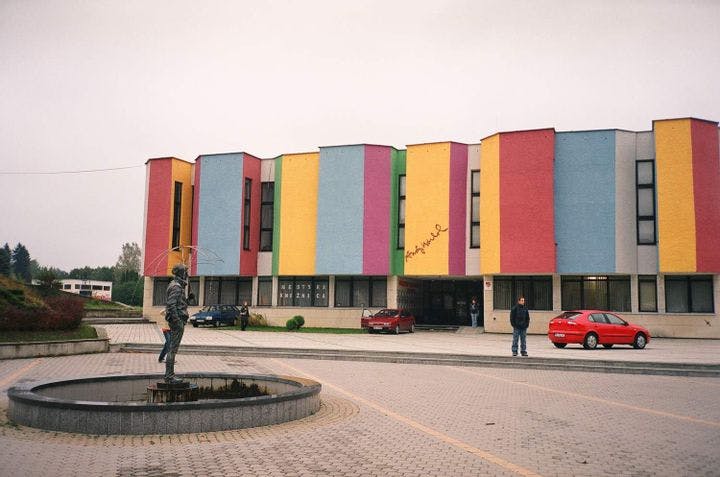Fall 2007
Manna from Manhattan
– The Wilson Quarterly
The Andy Warhol Museum of Modern Art has always been viewed as an odd fit in Medzilaborce, Slovakia, not unlike Warhol himself.
Before Bilbao there was Medzilaborce. The art world expected Medzilaborceans to be filled with gratitude when the United States, Slovakia, and the Andy Warhol Foundation gave the small mountain town an art museum. But when a boxy white former communist cultural center was reopened as the Andy Warhol Museum of Modern Art in 1991, much of the reaction in the impoverished community of 6,000 was hostile and contemptuous, writes Július Gajdos, professor in the Institute of Arts and Design at the University of West Bohemia, in the Czech Republic. Installed in one of the most inaccessible areas of Slovakia, 370 miles from Bratislava, the capital, the museum aroused jealousy among many Slovakians, who said that the benighted people of Medzilaborce were ill prepared to build a tourist industry, much less to appreciate pop art. Indeed, some deeply religious townspeople denigrated Warhol as a decadent homosexual.
The museum was the brainchild of Warhol’s brother John Warhola and Michal Bycko, a teacher at the Medzilaborce Primary Arts School. Bycko began working to create the museum in 1987, the year Warhol died. Now the curator, Bycko sought to honor not only Warhol but his parents, who were born nearby and immigrated to the United States in 1913. Warhola donated some of his brother’s possessions—a snakeskin jacket, Brooks Brothers ties, and sunglasses. The Warhol Foundation lent about 20 works, including some Marilyn Monroe portraits, Campbell’s Soup I and II, a Red Lenin print, and a painted photo of Queen Ntombi Twala of Swaziland.
Awkwardly, Warhol himself, when asked about his origins, answered, “I came from nowhere.” But his mother’s strong influence—she signed some of his pictures at the beginning of his career—suggests the importance of his Slovakian heritage, Gajdos says. Julia Zavacky Warhola also painted and designed sculpture. A chandelier shaped like an angel in the foyer of the museum was modeled after a drawing, almost a scribble, made by Julia. She had a whimsical touch, creating paintings of the houses in her village showing them with hens’ legs, according to Gajdos.
Warhol’s art—the museum has two concrete Campbell’s soup cans flanking the entrance—was not embraced in eastern Slovakia during his lifetime. His mother sent some of Andy’s drawings to her family in the 1970s and ’80s, but they threw them out when they moved.
But Medzilaborce residents have warmed to Warhol and his fans in the 16 years since the museum opened. A hotel was built across the street, and a fountain erected around a statue of the artist. The number of visitors has gradually increased, most of them coming from abroad, judging by the signatures in a guest book. Gajdos says the residents of Medzilaborce have come to recognize the value and importance of the museum “through others.”
* * *
The Source: "The Andy Warhol Museum of Modern Art in Mezilaborce, Slovakia" by Julius Gajdos, in Kosmas, Spring 2007.
Photo courtesy of Wikimedia Commons
